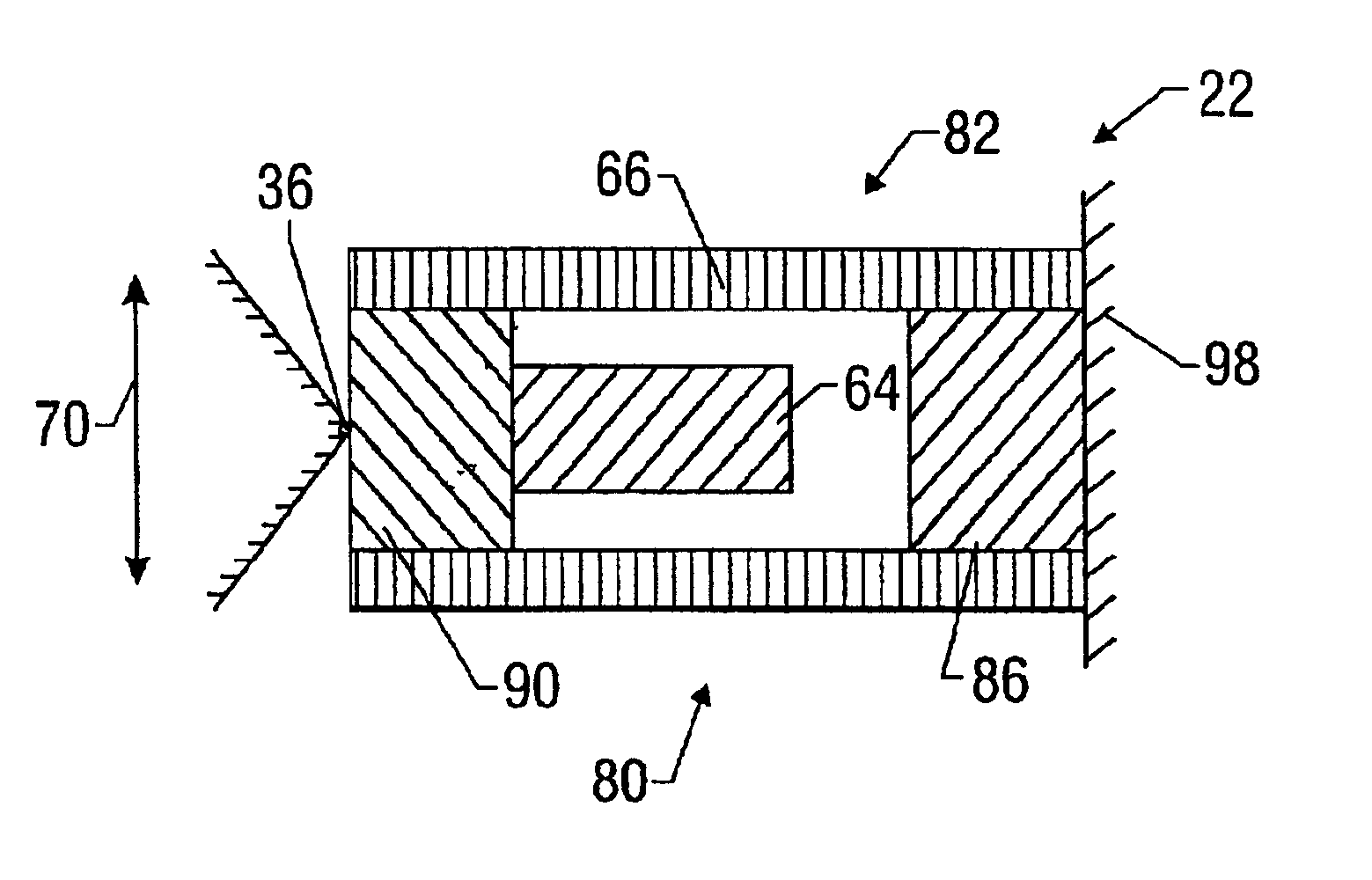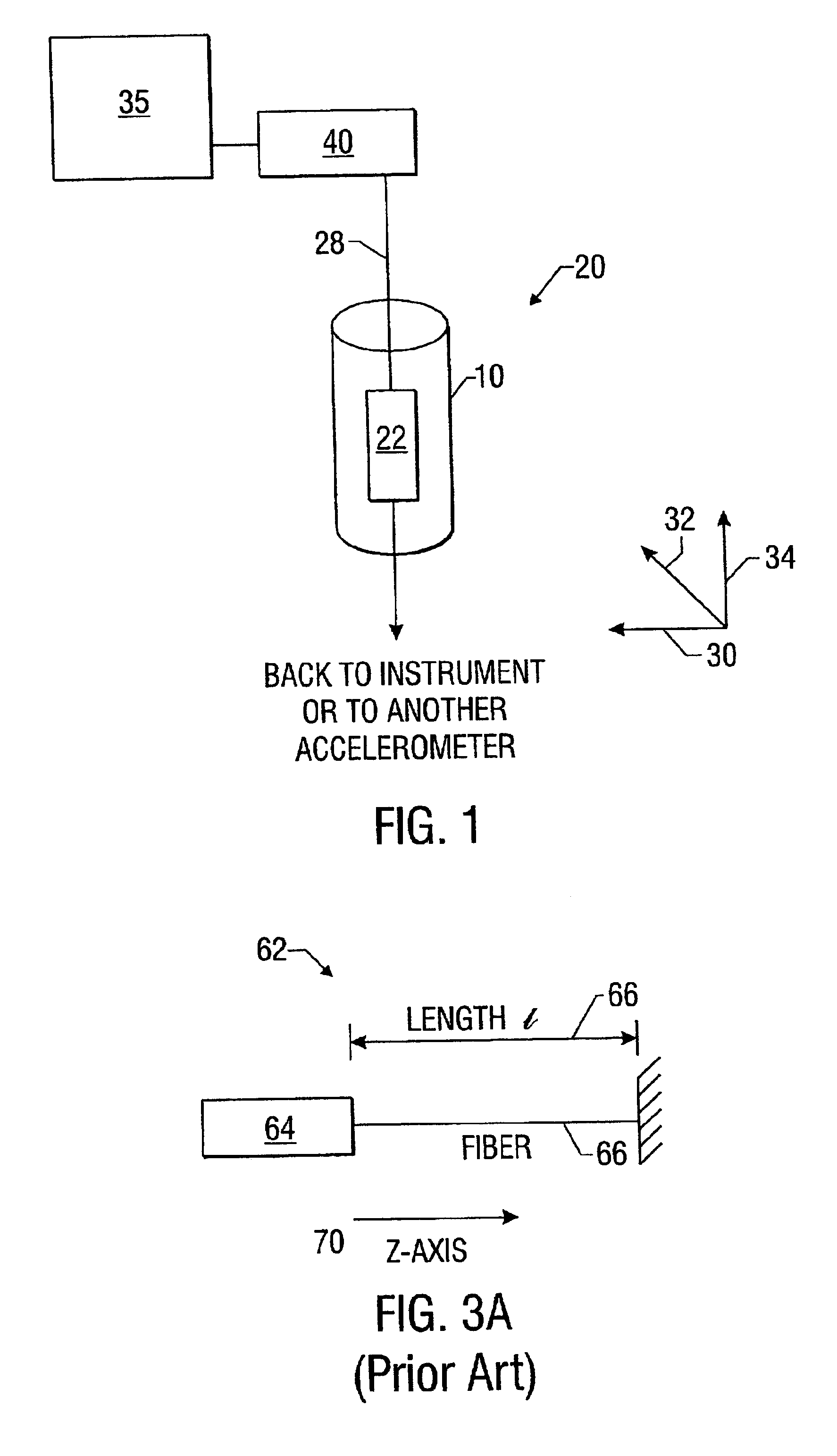Highly sensitive cross axis accelerometer
a cross-axis accelerometer, high-sensitivity technology, applied in the direction of acceleration measurement using interia force, speed/acceleration/shock measurement, instruments, etc., can solve the problems of limited electronic sensors presently used, oil well monitoring presents certain challenges for conventional sensors, and the on-board electronics of such sensors must operate in a hostile environmen
- Summary
- Abstract
- Description
- Claims
- Application Information
AI Technical Summary
Benefits of technology
Problems solved by technology
Method used
Image
Examples
Embodiment Construction
[0038]Referring to FIG. 1, a structure 10 subjected to a hostile environment, such as an oil or gas well borehole, building, bridge, aircraft, pump or other structure or component subjected to acceleration has coupled to it at least one highly sensitive accelerometer 22. Accelerometer 22 is part of transmission cable string 20 connected by transmission cable 28 to a signal converter 40 and signal processing equipment 35. The acceleration of structure 10 in any of the three axes 30, 32, 34 is, depending on the orientation of the accelerometer, detected by accelerometer 22. Signal processing equipment 35 may comprise any known instrumentation for processing the electrical, electro-optical, or optical signal of the various embodiments of the present invention.
[0039]In one embodiment of the present invention, accelerometer 22 is mounted within a hermetically sealed vessel (not shown) and is disposed in a harsh environment. The harsh environment may have a high temperature (up to about 1...
PUM
 Login to View More
Login to View More Abstract
Description
Claims
Application Information
 Login to View More
Login to View More - R&D
- Intellectual Property
- Life Sciences
- Materials
- Tech Scout
- Unparalleled Data Quality
- Higher Quality Content
- 60% Fewer Hallucinations
Browse by: Latest US Patents, China's latest patents, Technical Efficacy Thesaurus, Application Domain, Technology Topic, Popular Technical Reports.
© 2025 PatSnap. All rights reserved.Legal|Privacy policy|Modern Slavery Act Transparency Statement|Sitemap|About US| Contact US: help@patsnap.com



